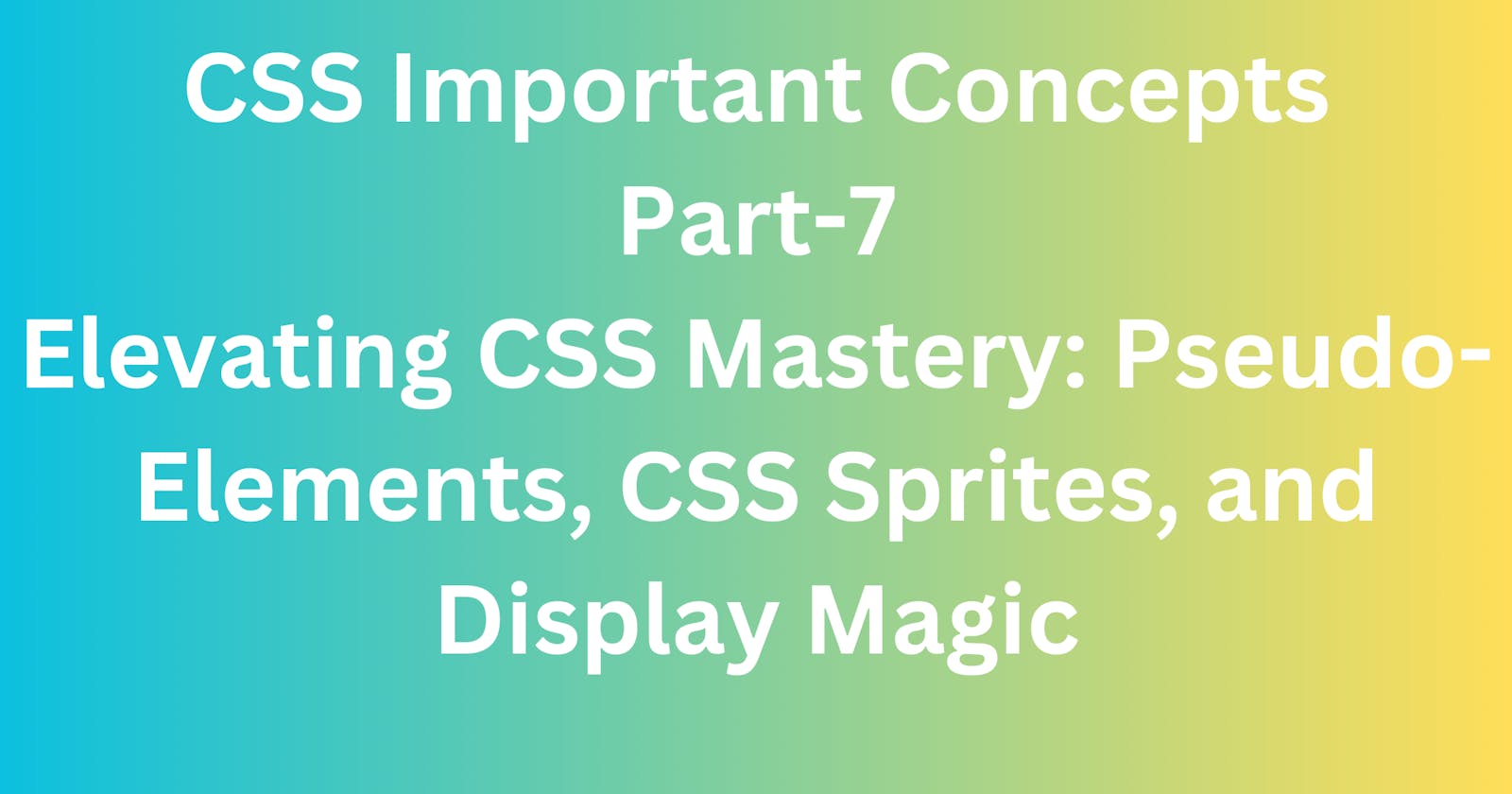Introduction
CSS is a dynamic styling language that offers a plethora of tools for crafting engaging and interactive web designs. In this guide, we'll delve into the enchanting world of pseudo-elements and classes, explore the efficiency of CSS sprites, and unravel the mysteries behind the visibility: hidden and display: none properties.
Pseudo-Elements and Classes
Pseudo-elements and classes provide a way to style specific parts of an HTML document without the need for additional markup. Let's explore their functionality:
Pseudo-Elements (
::beforeand::after):Add content before or after an element.
Example:
.quote::before { content: '\201C'; /* Unicode for left double quotation mark */ }
Pseudo-Classes (
:hoverand:nth-child):Style elements based on user interaction or position.
Example:
button:hover { background-color: #3498db; }
CSS Sprites: Optimizing Image Loading
CSS sprites involve combining multiple images into a single image and using background positioning to display specific parts. This technique reduces the number of server requests and improves page loading times.
Example: Creating a CSS Sprite
.icon {
width: 30px;
height: 30px;
background: url('sprites.png') -60px 0; /* Adjust coordinates for each icon */
}
Visibility: Hidden vs. Display: None
Both visibility: hidden and display: none hide elements, but they differ in how they affect the layout:
visibility: hidden:The element is hidden, but it still occupies space in the layout.
Example:
.hidden-element { visibility: hidden; }
display: none:The element is hidden, and it does not occupy any space in the layout.
Example:
.invisible-element { display: none; }
Conclusion
In mastering these advanced CSS techniques, you've acquired the tools to add finesse and efficiency to your web designs. Pseudo-elements and classes allow you to style specific elements with precision, while CSS sprites optimize image loading for better performance. Understanding the nuances between visibility: hidden and display: none empowers you to control element visibility and layout impact. Experiment with these concepts, blend them into your projects, and elevate your CSS craftsmanship. Happy coding!
